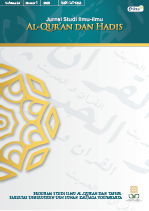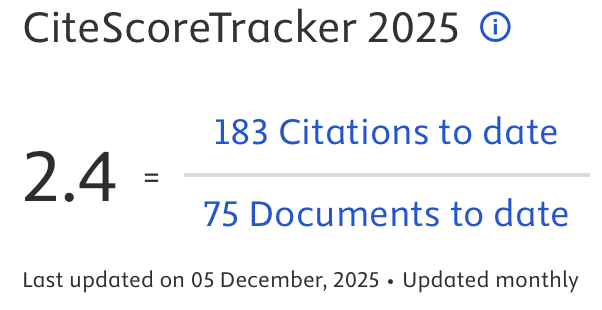Contemporary Fragments in Islamic Interpretation: An Analysis of Gus Baha's Tafsir Jalalayn Recitation on YouTube in the Pesantren Tradition
DOI:
https://doi.org/10.14421/qh.v24i1.4389Keywords:
Tafsir Jalalayn, Gus Baha, Pesantren Traditions, YouTubeAbstract
The impact of digital technology on Indonesian society has been profound, leading to changes in cultural and religious practices. This study focuses on the phenomenon of Gus Baha's Jalalayn Tafsir recitation on YouTube and aims to understand how this has become a contemporary fragment in the history of tafsir recitation in Indonesian pesantrens. The study employs a media theory approach popularized by Marshall McLuhan to analyze the workings and impact of this recent phenomenon. McLuhan's theory includes three main ideas, such as Medium is The Message and Medium as Extension of Man, which are used to explore the new workings of Gus Baha's Jalalayn Tafsir recitation on YouTube, as well as the Global Village and Technology Determinism to understand the impact of this phenomenon. The study seeks to answer two key questions: (1) how is the phenomenon of Gus Baha's Tafsir recitation on YouTube and (2) how it has become part of the long history of pesantren tradition. The results of this study will provide insights into how digital technology has changed religious practices in Indonesia and the role of YouTube in this change.
 Abstract viewed: 762 times
|
Abstract viewed: 762 times
|
 PDF downloaded = 535 times
PDF downloaded = 535 times
References
Cacciatore, Michael A., Dietram A. Scheufele, dan Shanto Iyengar. “The End of Framing as we Know it and the Future of Media Effects.” Mass Communication and Society 19, no. 1 (2 Januari 2016): 7–23.
Baran, Stanley J. dan Dennis K. Davis. Teori Komunikasi Massa: Dasar, Pergolakan, dan Masa Depan. Jakarta: Salemba Humanika, 2010.
Fatah, Rohadi Abdul dan Sudarso. Ilmu dan Teknologi dalam Islam. Jakarta: Rineka Cipta, 1992.
Holmes, David. Teori Komunikasi: Media, Teknologi dan Masyarakat. Yogyakarta: Pustaka Pelajar, 2012.
Jamaludin, Muhammad. “Metamorfosis Pesantren di Era Globallisasi.” Karsa 20, no. 1 (2012).
Juris, Jeffrey S. Reflections on #Occupy Everywhere: Social Media, Public Space, and Emerging Logics of Aggregation. Leiden: Brill, 2016.
Littlejohn, Stephen W. dan Karen A. Foss. Teori Komunikasi. Jakarta: Salemba Humanika, 2009.
Lukman, Fadhli. “Tafsir Sosial Media di Indonesia.” Nun: Jurnal Studi Al-Qur’an dan tafsir 2, no. 2 (2016).
Mabrur. “Mabrur, Era Digital dan Tafsir al Qur’an Nusantara: Studi Penafsiran Nadirsyah Hosen di Media Sosial.” Prosiding Konferensi Integrasi Interkoneksi Islam dan Sains 1 (Maret 2020).
Marisa. Komputer dan Media Pembelajaran. Banten: Universitas Terbuka, 2012.
McLuhan, Marshall. Understanding The Media. New York: McGraw-Hill, 1964.
Meyer, Birgit. “Introduction: From Imagined Communities to Aesthetic Formations: Religious Mediations, Sensational Forms, and Styles of Binding.” Dalam Aesthetic Formations: Media, Religion, and the Senses, disunting oleh Birgit Meyer, 1–28.
Miftahuddin, Muhammad. “Sejarah Media Penafsiran di Indonesia.” Nun: Jurnal Studi Alquran dan Tafsir di Nusantara 6, no. 2 (30 Desember 2020): 117–43.
Morissan. Teori Komunikasi Massa: Media, Budaya dan Masyarakat. Bogor: Ghalia Indonesia, 2013.
Mubarok, Muhamad Fajar, dan Muhamad Fanji Romdhoni. “Digitalisasi al-Qur’an dan Tafsir Media Sosial di Indonesia” 1, no. 1 (2021): 5.
Nafisatuzzahro. “Tafsir Al-Qur’an Audiovisual di Cybermedia: Kajian Terhadap Tafsir Al-Qur’an di YouTube dan Implikasinya terhadap Studi al-Qur’an dan Tafsir.” UIN Sunan Kalijaga, 2016.
Pando, Melkyor. Hiruk Pikuk Jaringan Sosial Terhubung: Refleksi Filsafat Teknologi atas Jaringan Sosial Terhubung. Yogyakarta: Kanisius, 2014.
Qudsy, Saifuddin Zuhri, dan Althaf Husein Muzakky. “Dinamika Ngaji Online Dalam Tagar Gus Baha: Studi Living Qur’an Di Media Sosial.” Poros Onim: Jurnal Sosial Keagamaan 2, no. 1 (29 Juni 2021): 1–19.
Risdiana, Aris, Reza Bakhtiar Ramadhan, dan Imam Nawawi. “Transformasi Dakwah Berbasis ‘Kitab Kuning’ Ke Platform Digital.” Jurnal Lektur Keagamaan 18, no. 1 (30 Juni 2020): 1–28.
Rully Nasrullah. Teori dan Riset Media Siber (Cybermedia). 2 ed. Jakarta: Prenamedia Group, 2021.
Rusdianto, Ujang. Cyber CSR: A Guide to CSR Communication on Cyber Media. Yogyakarta: Graha Ilmu, 2014.
Simarmata, Janner. Pengenalam Teknologi Komputer dan Informasi. Yogyakarta: Andi, 2006.
Suharto, Babun, dan Erma Fatmawati. “Digital Learning Transformation at Islamic Boarding Schools: Digital-Based Learning Patterns in Salaf and Modern Islamic Boarding Schools in Jember.” Journal of Positive School Psychology 6, no. 2 (3 Maret 2022): 5319–29.
Sundar, S. Shyam, dan Anthony M. Limperos. “Uses and Grats 2.0: New Gratifications for New Media.” Journal of Broadcasting & Electronic Media 57, no. 4 (1 Oktober 2013): 504–25.
Tandiyo. Produksi Media. Banten: Universitas Terbuka, 2014.
Downloads
Published
How to Cite
Issue
Section
License
Copyright (c) 2023 Thoriqatul Faizah, Saifuddin Zuhri Qudsy, Mahfidhatul Khasanah Khasanah

This work is licensed under a Creative Commons Attribution-NonCommercial-NoDerivatives 4.0 International License.
Publishing your paper with Jurnal Studi Ilmu-ilmu al-Qur'an dan Hadis means that the author or authors retain the copyright in the paper. Jurnal Studi Ilmu-ilmu al-Qur'an dan Hadis uses license CC-BY-NC-ND or an equivalent license as the optimal license for the publication, distribution, use, and reuse of scholarly works. This license permits anyone to copy and redistribute the material in any medium or format and must give appropriate credit, provide a link to the license, and indicate if changes were made. If you remix, translate, transform or build upon the material you may use it for private use only and not for distribution. Jurnal Studi Ilmu-ilmu al-Qur'an dan Hadis granted an exclusive non-commercial reuse license by the author(s), but the author(s) are able to put the paper onto a website, distribute it to colleagues, give it to students, use it in your thesis, etc, so long as the use is not directed at a commercial advantage or toward private monetary gain. The author(s) can reuse the figures and tables and other information contained in their paper published by Jurnal Studi Ilmu-ilmu al-Qur'an dan Hadis in future papers or work without having to ask anyone for permission, provided that the figures, tables, or other information that is included in the new paper or work properly references the published paper as the source of the figures, tables or other information, and the new paper or work is not direct at a private monetary gain or commercial advantage.
Jurnal Studi Ilmu-ilmu al-Qur'an dan Hadis journal Open Acces articles are distrubuted under the Creative Commons Attribution-NonCommercial-NoDerivatives 4.0 International (CC BY-NC-ND 4.0). Article can be read, copy and redistribute the material ini any medium or format under the following conditions:
Attribution — You must give appropriate credit, provide a link to the license, and indicate if changes were made. You may do so in any reasonable manner, but not in any way that suggests the licensor endorses you or your use.
NonCommercial — You may not use the material for commercial purposes.
NoDerivatives — If you remix, transform, or build upon the material, you may not distribute the modified material.










